Project Story 04 Kachidoki Bridge
The Gateway on Water “Japan’s largest bascule bridge,” a symbol of the Sumida River
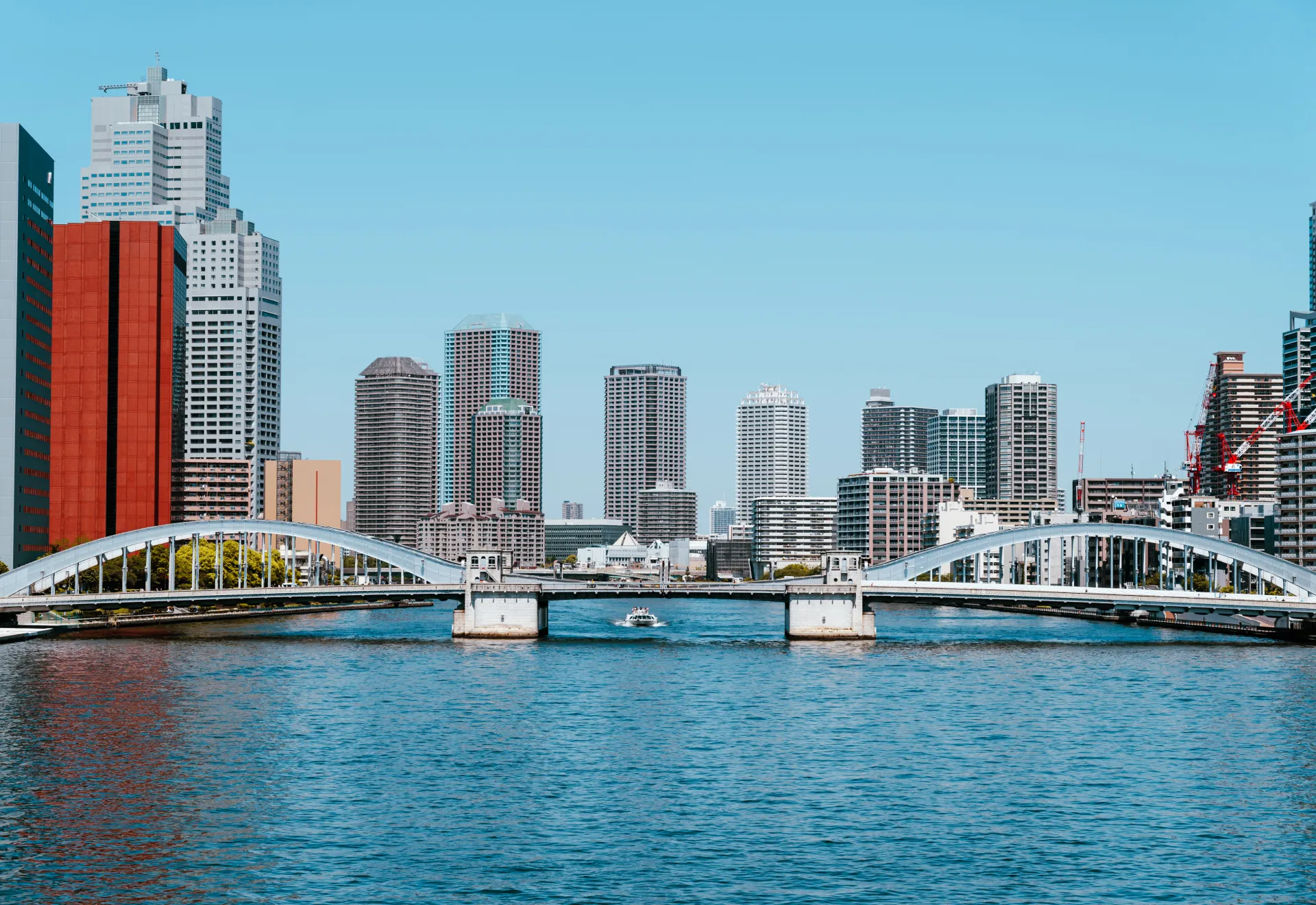
The Kachidoki Bridge is a road bridge near the mouth of the Sumida River in eastern Tokyo.
This is a bascule bridge, a special type of bridge whose girder opens to allow ships to pass.
Although it no longer opens today, it used to open several times a day.
Its distinctive appearance has made it a symbol of Shitamachi, Tokyo's traditional downtown area, and it has appeared in numerous movies, novels, manga, and anime.
It is truly deserving of being called "the symbol of the Sumida River.
Features
 History
Designed as the main gate for the planned—but never-held—World Expo
History
Designed as the main gate for the planned—but never-held—World Expo
The Kachidoki Bridge was planned as the main gate for the 1940 World Exposition, which was intended to commemorate the 2600th year of Japan’s imperial era. Construction of the bridge began on June 10, 1933. Despite material shortages, construction was completed on June 14, 1940, taking a total of seven years.
The Kachidoki Bridge measures 246.0 meters in length, with a bascule span of 51.6 meters and a width of 22 meters. It showcased Japan’s finest engineering of the time and was even acclaimed as “the best movable bridge in the East.” The entire bridge consists of three main sections: fixed side spans, which are arch bridges on both sides, and a central bascule span. The machinery that operates the bascule span is housed within two piers located in the river.
The project was led by the former Tokyo City, responsible for direct works, and The Zenitaka Corporation, handling the contracted works. The steel girder sections were fabricated by Ishikawajima Shipyard (now IHI), Yokogawa Bridge Works (now Yokogawa Bridge), and Kawasaki Rolling Stock Manufacturing (now Kawasaki Heavy Industries).
The name “Kachidoki Bridge” originates from “Kachidoki no Watashi,” a ferry crossing that once connected Tsukiji and Tsukishima. The ferry was established in 1905 to commemorate the fall of Port Arthur during the Russo-Japanese War. The victorious spirit of defeating a major power like Russia inspired the name “Kachidoki,” which means a triumphant cry of victory.
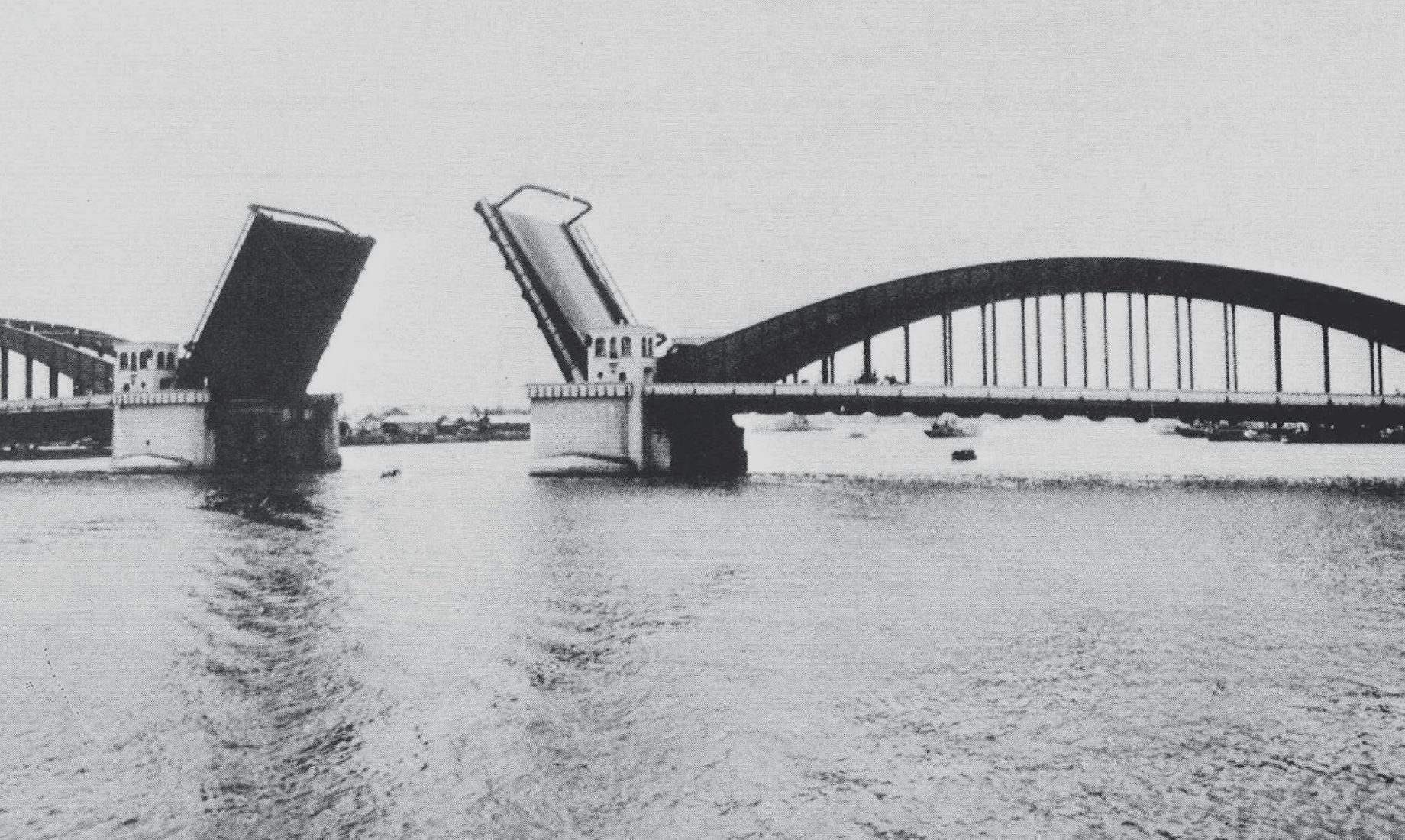
 The Birth of “The Greatest Bascule Bridge in the East”
And its transition into a “bridge that no longer opens”
The Birth of “The Greatest Bascule Bridge in the East”
And its transition into a “bridge that no longer opens”
The Kachidoki Bridge was planned as Japan’s only “Chicago-type double-leaf bascule bridge,” designed to accommodate both maritime transport and land traffic. At the time, many ships navigated the Sumida River, and since maritime transport took priority over land traffic, the bridge was designed as a movable bridge. It opened three times daily—at 9 a.m., noon, and 3 p.m.—for about 20 minutes each time to allow large vessels to pass through. In 1947, a tram line also opened on the bridge, making it a key route for automobiles, trams, and ships alike.
However, with motorization during the period of rapid economic growth, traffic jams caused by the bridge openings became an increasing concern. In 1964, a fixed-span bridge without a movable mechanism,the Tsukuda Bridge (constructed by our company), was completed upstream, leading to a sharp decline in maritime traffic. After the opening of the Tsukuda Bridge, the number of times the Kachidoki Bridge opened fell to fewer than 100 per year.
On November 29, 1970, the bascule span was opened for the last time. Since then, the Kachidoki Bridge has become a “bridge that no longer opens.”
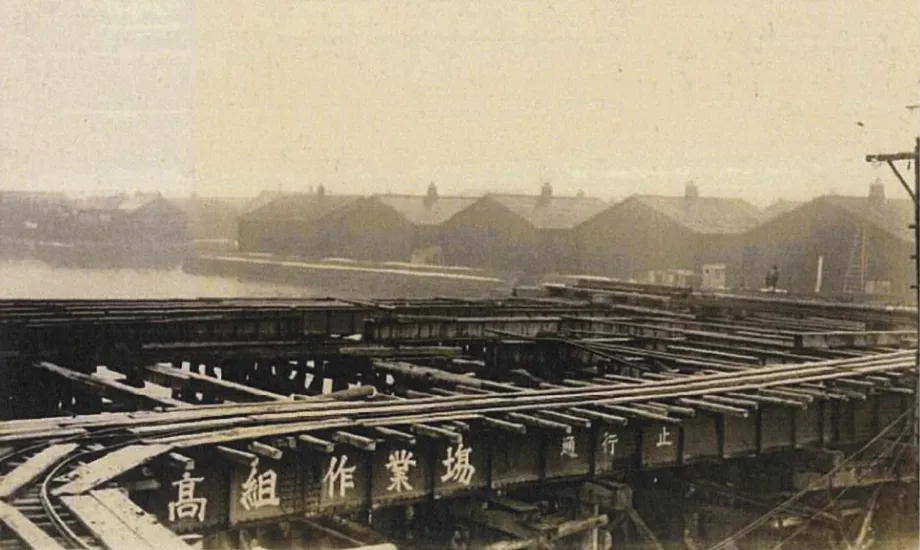

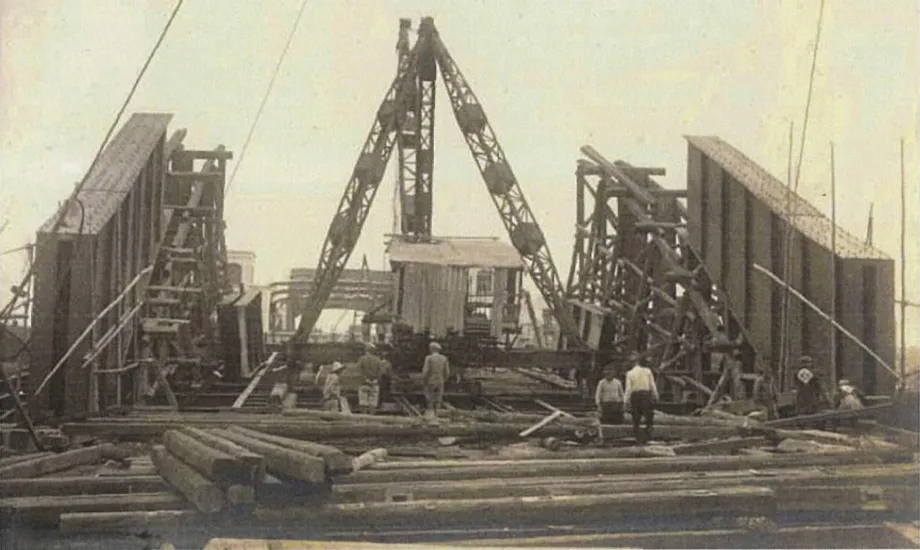
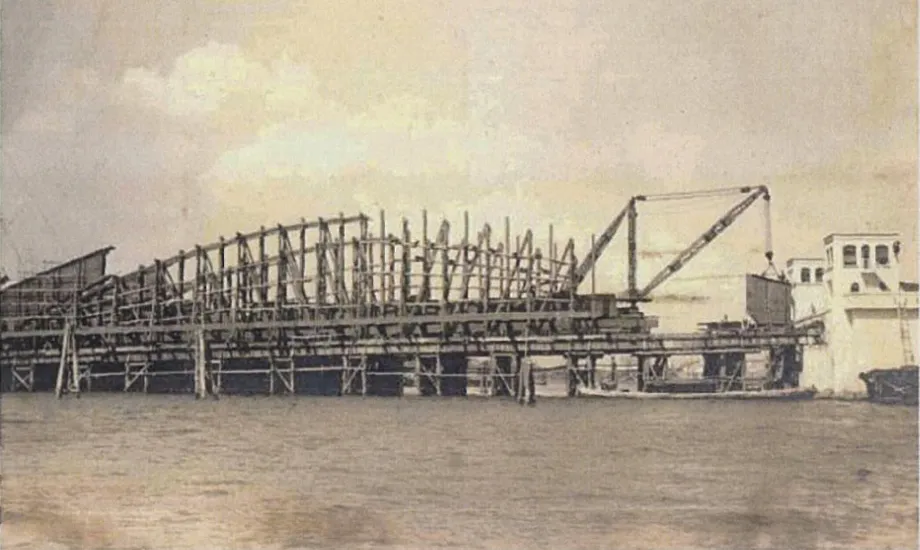


(Photo courtesy of the Tokyo Metropolitan Government Bureau of Construction)
 Designated as a Cultural Property
A masterpiece in the history of bridge engineering
Designated as a Cultural Property
A masterpiece in the history of bridge engineering
As Japan’s largest bascule bridge, the Kachidoki Bridge’s engineering value was officially recognized, and together with the Kiyosu Bridge and Eitai Bridge—also spanning the Sumida River—it was designated an Important Cultural Property by the Japanese government in June 2007.
Furthermore, due to the historical significance of its mechanical equipment, the bascule mechanism was designated a Mechanical Engineering Heritage by the Japan Society of Mechanical Engineers in August 2017. Each movable girder weighs approximately 1,000 tons. Counterweights of similar weight, housed within the bridge piers, were used to lift the spans. Massive gears with a radius of 7.4 meters were powered by electric motors. The original mechanical equipment remains intact and is open to the public through regular tours. It is also preserved and displayed at the Kachidoki Bridge Museum, a renovated former substation adjacent to the bridge.
Reference page: Agency for Cultural Affairs “Cultural Heritage Online” — Kachidoki Bridge
https://bunka.nii.ac.jp/heritages/detail/147848
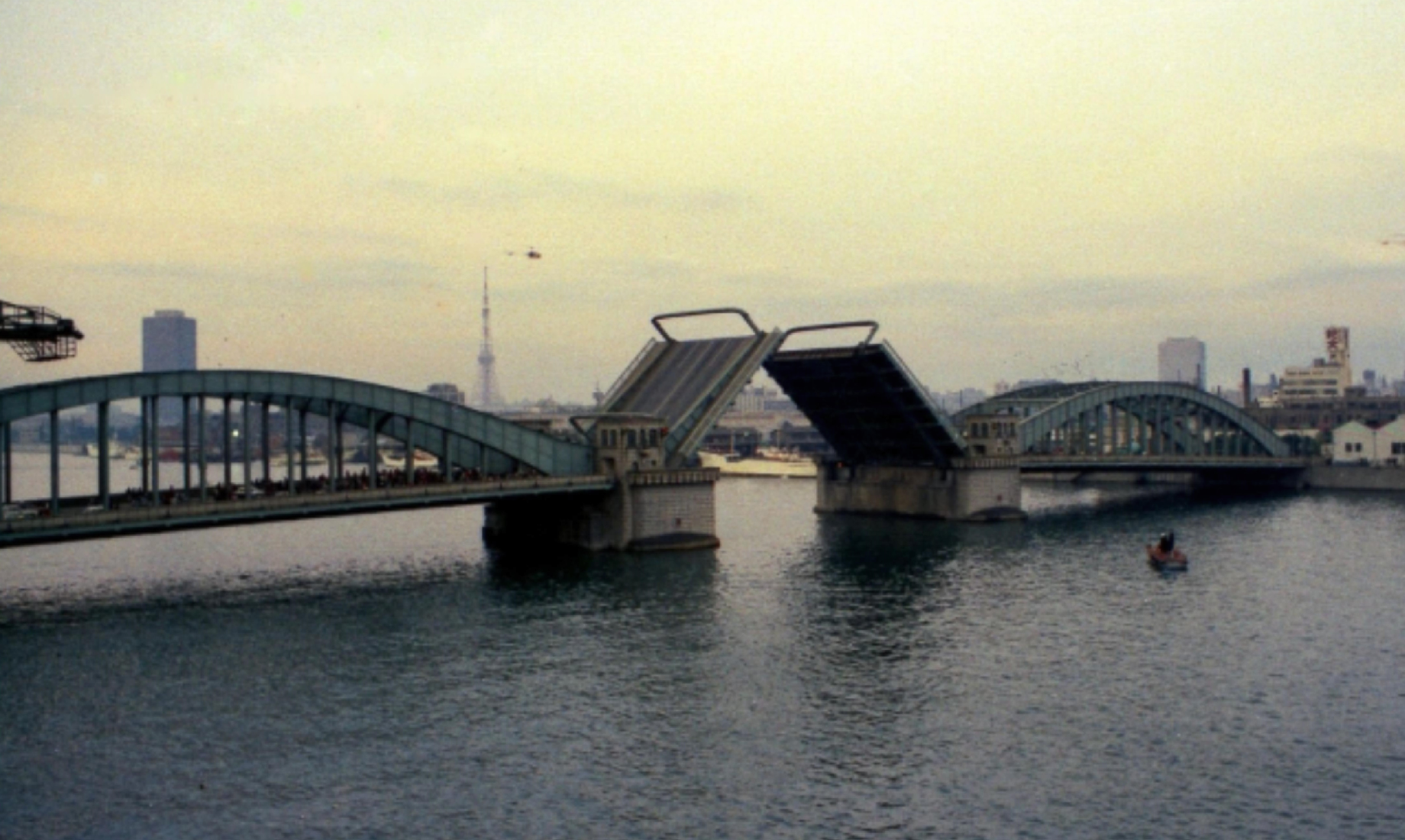
(Photo: Takashi Yasukochi, From the Digital Archives of the Civil Engineering Library, JSCE)
 The Kachidoki Bridge Remains a Beloved Symbol
of Tokyo’s Traditional Townscape Today
The Kachidoki Bridge Remains a Beloved Symbol
of Tokyo’s Traditional Townscape Today
Thanks to its grand scale and distinctive appearance, the Kachidoki Bridge has appeared in numerous works of literature and film as a symbol of Tokyo's traditional downtown area. In the 1954 movie Godzilla, the original Godzilla flips the Kachidoki Bridge after destroying Asakusa and heading down the Sumida River toward Tokyo Bay. The manga and anime series KochiKame: Tokyo Beat Cops also features the bridge frequently, with it playing a key role in the climax of the movie adaptation.
Although the Kachidoki Bridge is now known as a “bridge that no longer opens,” there are still movements mainly led by citizen groups to reopen the bridge in hopes of revitalizing the Shitamachi area. Furthermore, expert studies have reported that “there are no technical obstacles to opening and closing the bridge." We hope to see the Kachidoki Bridge reopened someday.

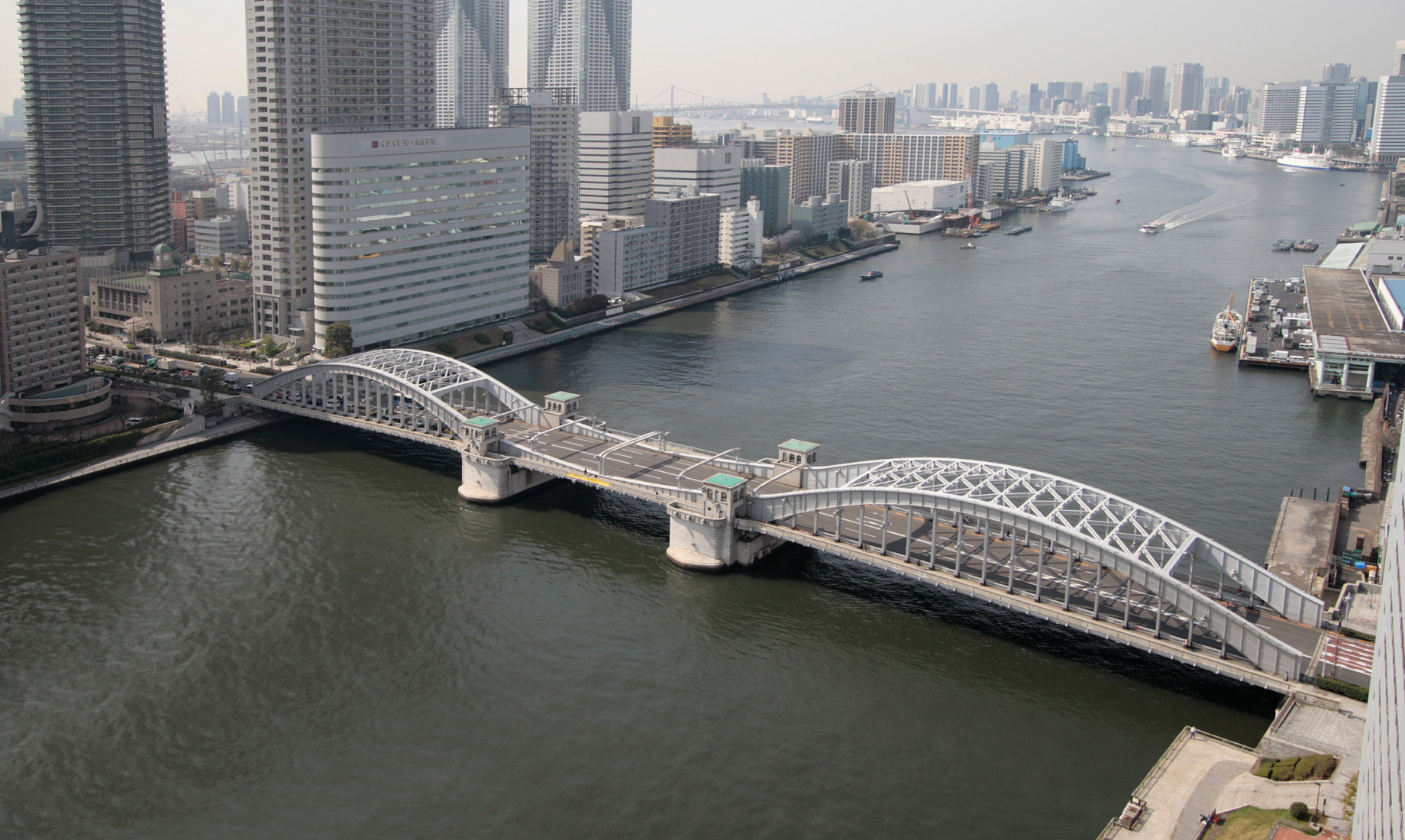
The Gateway on WaterThe Gateway on Water
Project Overview
-
- Construction Site
-
Chuo Ward, Tokyo
-
- Project Owner
-
Former Tokyo City
-
- Design
-
Former Tokyo City (Katsutake Naruse, Tatsuya Takio, Masaru Yasumi)
-
- Construction Period
-
June 1933–June 1940
-
- Project Overview
-
Steel bascule bridge
Bridge length: 246.0 m
Span length: 86.0 m
Bascule span width: 26.6 m
Fixed span width: 25.8 m
Equipped with stone railings and short side railings
Two steel plate girders (including four gate-shaped frames)
Two steel tied arches (including two gate-shaped frames)
Two reinforced concrete piers (including four pier towers)
Two reinforced concrete abutments
Complete set of bascule mechanisms
